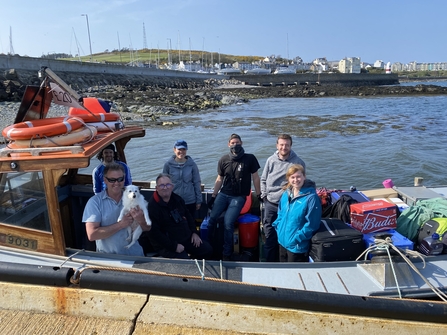
We arrived on the Calf early evening on Wednesday 21st, after about 6 weeks of anticipation due to the COVID 19 restrictions. Spring had certainly beaten us to it, the familiar sound of meadow pipits, willow warblers and wheatear emerged from the green fields and the Observatory gardens were lined with daffodils.
















